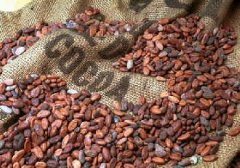The basic concept of Coffee that must be known about Coffee

First, know the coffee
1. What is coffee
Coffee (scientific name: Coffea arabica), also known as coffee tree, Arabica coffee, etc., is the national flower of Yemen. Before the 6th century AD, Yemen was called Arabian, so the coffee trees shipped from them to other places were also called Arabian coffee trees. The name coffee comes from the Arabic word "Qahwah", which means plant drink. Later, coffee spread all over the world and was named after its place of origin, "Kaffa". It was not officially named "coffee" until the 18th century.
In plant taxonomy, it is an evergreen shrub or small tree of Rubiaceae. Lateral branches extend horizontally, opposite, occasionally three whorls; simple leaves opposite, flowers are 2-10 clustered in leaf axils, the fruit is drupe oval, the fruit of coffee is formed by outer skin, pulp, endocarp, silver skin, and the seeds (coffee beans) wrapped in the innermost layers mentioned above, the seeds are located in the central part of the fruit, and the parts outside the seeds are of little use. Coffee is a kind of horticultural perennial cash crop, which has the characteristics of fast growth, high yield, high value and wide market. Coffee varieties can be divided into small-grain, medium-grain and large-grain species, the former contains low caffeine content and strong flavor, while the latter two have high caffeine content but poor flavor. At present, coffee sold in the world is generally made of small and medium seeds in different proportions, usually 70% of medium seeds, mainly caffeine, and 30% of small seeds, mainly for their aroma. Each coffee variety generally has a few to a dozen variants. Coffee is more resistant to shade and cold, but not resistant to light, drought and disease. Coffee contains nine kinds of nutrients, such as caffeine, protein, crude fat, crude fiber and sucrose. As a beverage, coffee is not only mellow and delicious, slightly bitter and sweet, but also can excite nerves and dispel fatigue. In medicine, caffeine can be used as an anesthetic, stimulant, diuretic and cardiotonic, as well as to help digestion and promote metabolism. The pulp of coffee is rich in sugar and can be used to make sugar and alcohol. Coffee flowers contain essential oils that can be used to extract high-grade spices.
2. Coffee tree
Wild coffee tree 5MUR 10m. In artificial cultivation, in order to facilitate hand picking, it is generally trimmed to less than 2 meters. Coffee trees grow leaves, blossom and bear fruit at the same time. The leaves are oval in shape.
The first flowering period of the coffee tree is about three years old. the white five-petal tube-shaped flowers are filled with a faint scent of jasmine and the inflorescences are arranged in dense clusters. The petals will wither within two or three days, and the fruit will mature about 8 months after flowering. The fruit is a drupe with a diameter of about 1.5cm. It turns green at first, then turns yellow gradually, and turns red when ripe. It is very similar to cherries, so it is called cherry coffee (Coffee Cherry). It can be harvested at this time.
"Cherry" generally contains two seeds, called "flat beans", and a few contain only one seed, called "round beans". These coffee seeds are "raw beans". Coffee fruit contains two seeds, namely coffee beans. The two beans are connected face to face with each other on one side of the plane. Each coffee bean has a thin outer film, which is called silver skin, and its outer layer is covered with a yellow outer skin, called endocarp. The whole coffee bean is wrapped in a sticky pulp to form a soft and sweet coffee pulp with the outermost shell.
The seeds are wrapped in a hard endocarp, and the better the coffee, the thicker the hard pericarp. At the same time, this layer of peel also makes the coffee beans can be kept fresh. The coffee beans can be found at higher elevations in Brazil and near the Tropic of Cancer. This is also Macado's boutique selected beans.
3. Planting and regional distribution of coffee trees.
Climate is the decisive factor for coffee cultivation. Coffee trees are only suitable for growing in the tropics or subtropics, so the zone between latitude 25 degrees south and north is generally called coffee belt or coffee area. However, not all the land located in this area can produce good coffee trees.
At present, coffee is grown in more than 70 countries in the world, all of which are located in the "coffee growth zone" with the equator as the center and between the latitudes of 25 degrees south and north. The "coffee growth zone" basically has five ideal natural conditions for the growth of coffee trees:
1), the climate as warm as spring (18 degrees-25 degrees), moderate rainfall (1500-2250mm). To be able to match the flowering cycle of the coffee tree.
2) the geographical environment with sufficient sunshine and good ventilation and drainage. However, too strong sunlight will inhibit the growth of coffee trees, so various producing areas will usually cooperate with the planting of some shade trees.
Coffee trees grow most luxuriantly in soils full of nitrogen, potassium carbonate and phosphoric acid.
4) the ideal altitude is 500-2000 meters.
There is absolutely no frost.
It can be seen that the conditions for the cultivation of high-quality coffee are quite strict: sunlight, rainfall, soil, altitude, air temperature, as well as the way coffee beans are harvested and the production process will affect the quality of coffee itself. Under the premise of ensuring a temperature of about 20 degrees, the higher the altitude or the closest to the Tropic of Cancer, the stronger the unique flavor of coffee.
4. The growth and harvest of coffee trees
To grow into a high-harvest and high-quality coffee tree, it is necessary to take good care of and select the seedlings. Generally, they begin to sprout about 40 days after sowing, and then transplant them to the greenhouse before they can grow into saplings. Only when the saplings grow to 40-50 cm high can they choose the healthier saplings to be transplanted to the farm. This practice is more traditional, but only in this way can the quality of coffee be guaranteed from the source. This is also the first quality assurance of Macado coffee.
After 5 years, the saplings grow into coffee trees, and then cut off the trunk of the tree every 8-9 years to make it grow again and control the height of the tree. After repeating this for 2 or 3 times, the harvest period of coffee trees can be as long as 30 years.
Coffee is a tropical plant, but it can't be exposed to sunlight all day long. In some areas, legume trees and banana trees are planted among coffee trees to protect them from the sun. This is called a sunshade tree. Such as Colombia, Ethiopia and so on.
Costa Rica, Brazil and other places do not need these sunshade trees because of the right sunshine time.
When the coffee fruit is ripe, it should be harvested immediately, but when there are fruits of different ripening stages on the same tree, harvesting is not an easy task, which is time-consuming and labor-consuming. Generally speaking, it takes as long as 4-5 months to complete the harvest from the early harvest, but if the ripe and immature fruits are picked at the same time, the quality of the coffee will be reduced.
5. The harvest time of coffee from main producing areas:
Regional harvest period
Brazil from May to late June
Colombia from October to late February of the following year
China and the United States from October to late February of the following year
Mocha from early October to late January of the following year
Robusta, Africa, from early October to late January of the following year
Arabica in Africa from early October to late January of the following year
Indonesia EK-1 from March to late May
In order to ensure that the coffee cherries do not go bad, they are sent to the coffee receiving station on the day of picking. Low-quality coffee cherries should be disposed of when they are planted and sent to the receiving station.
Brazilian farms in Macado have set up their own coffee receiving stations to complete the coffee water selection process. The receiving station uses a sink for preliminary cleaning and screening, which is also called Pre-cleaning and floating, which pours the coffee cherries into the sink and makes a simple cleaning to remove some debris. The next step is to separate the floating beans from the floating sundries. the ripe caffeine is dense and precipitates at the bottom of the sink, while the less mature and rotten fruits float on the surface because of the low density, which is easy to fish out.
Arabica bean coffee trees can be divided into two main varieties: Arabica (Coffea Arabica) and Robusta (Coffea Robusta/Coffea Canephora). In addition, there are some minor species, such as Coffea Liberica and Coffea Arabusta, but they are rare on the market.
Important Notice :
前街咖啡 FrontStreet Coffee has moved to new addredd:
FrontStreet Coffee Address: 315,Donghua East Road,GuangZhou
Tel:020 38364473
- Prev

General knowledge of boutique coffee 30 fancy coffee making methods-2
16. Cinnamon coffee CINNAMON COFFEE: material: coffee, 2 tablespoons marmalade, 1 cinnamon stick. Production: put the marmalade into the cup, pour in the coffee and stir with the cinnamon stick. Produced. 17. Congerado Coffee CAF CON GELOTO: material: ESPRESSO60ml, 100g vanilla ice cream. Make: vanilla ice cream is piled in a cup and filled with espresso. Porcelain appearance
- Next

The types and characteristics of common coffee beans what are their characteristics?
What are the common coffee beans? What are their characteristics? Below, Baitianhui will introduce the common coffee beans and their characteristics. Brazilian coffee beans are used for blending, preferably Santos bourbon coffee, which is soft, chocolate and well-balanced in acidity; Colombian coffee beans are full-bodied with rich aromas and high acidity. Costa Rican coffee beans are very fragrant
Related
- Beginners will see the "Coffee pull flower" guide!
- What is the difference between ice blog purified milk and ordinary milk coffee?
- Why is the Philippines the largest producer of crops in Liberia?
- For coffee extraction, should the fine powder be retained?
- How does extracted espresso fill pressed powder? How much strength does it take to press the powder?
- How to make jasmine cold extract coffee? Is the jasmine + latte good?
- Will this little toy really make the coffee taste better? How does Lily Drip affect coffee extraction?
- Will the action of slapping the filter cup also affect coffee extraction?
- What's the difference between powder-to-water ratio and powder-to-liquid ratio?
- What is the Ethiopian local species? What does it have to do with Heirloom native species?

